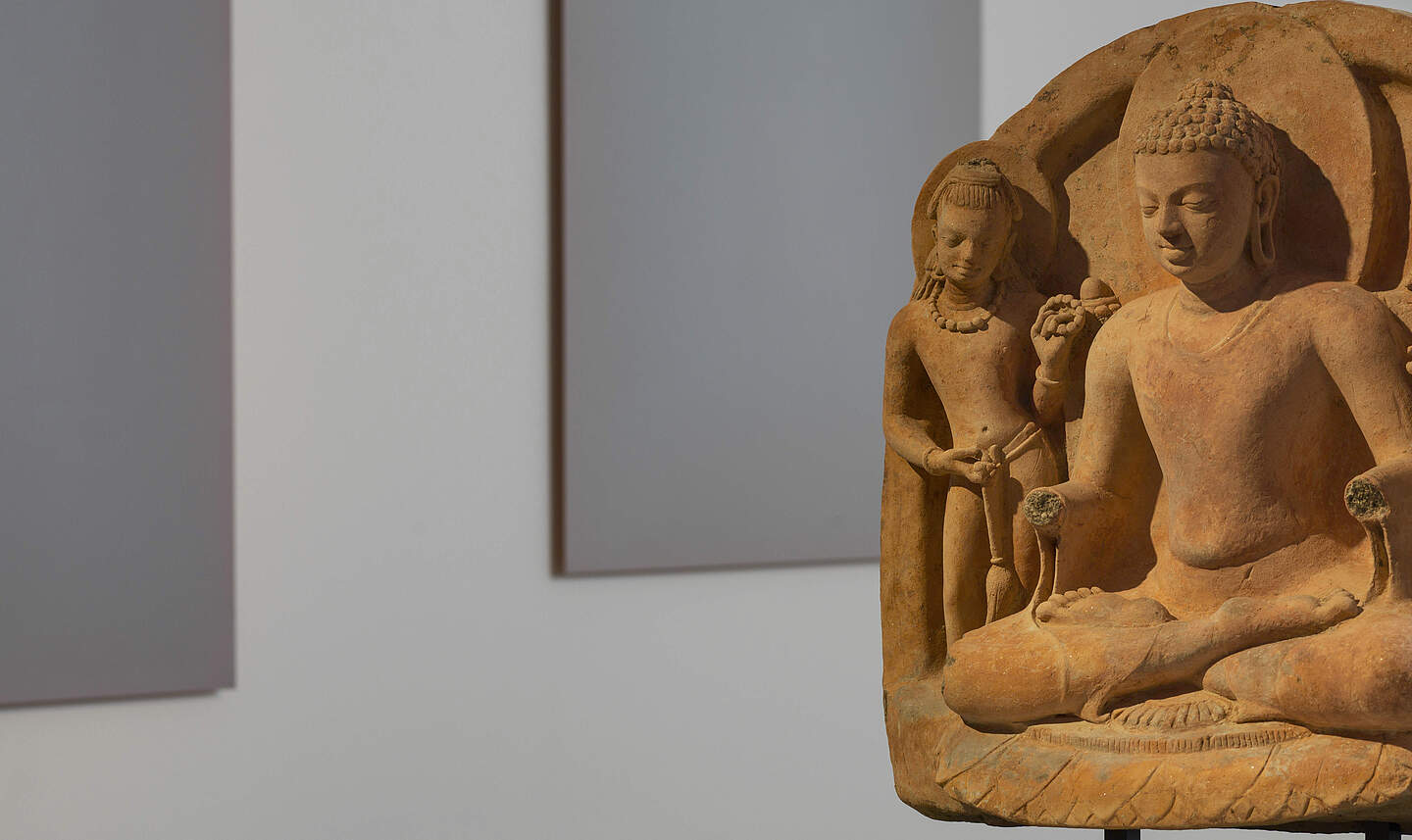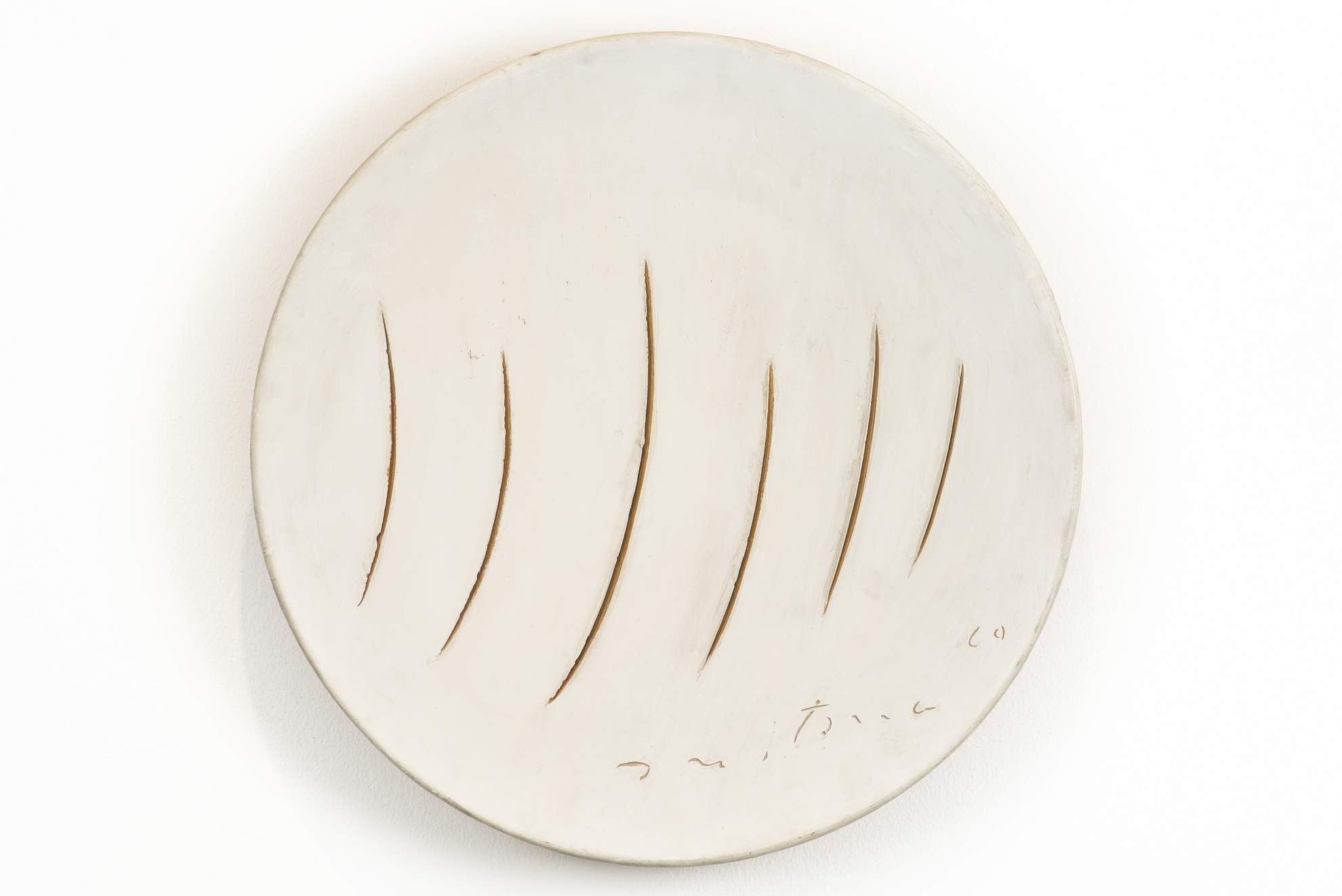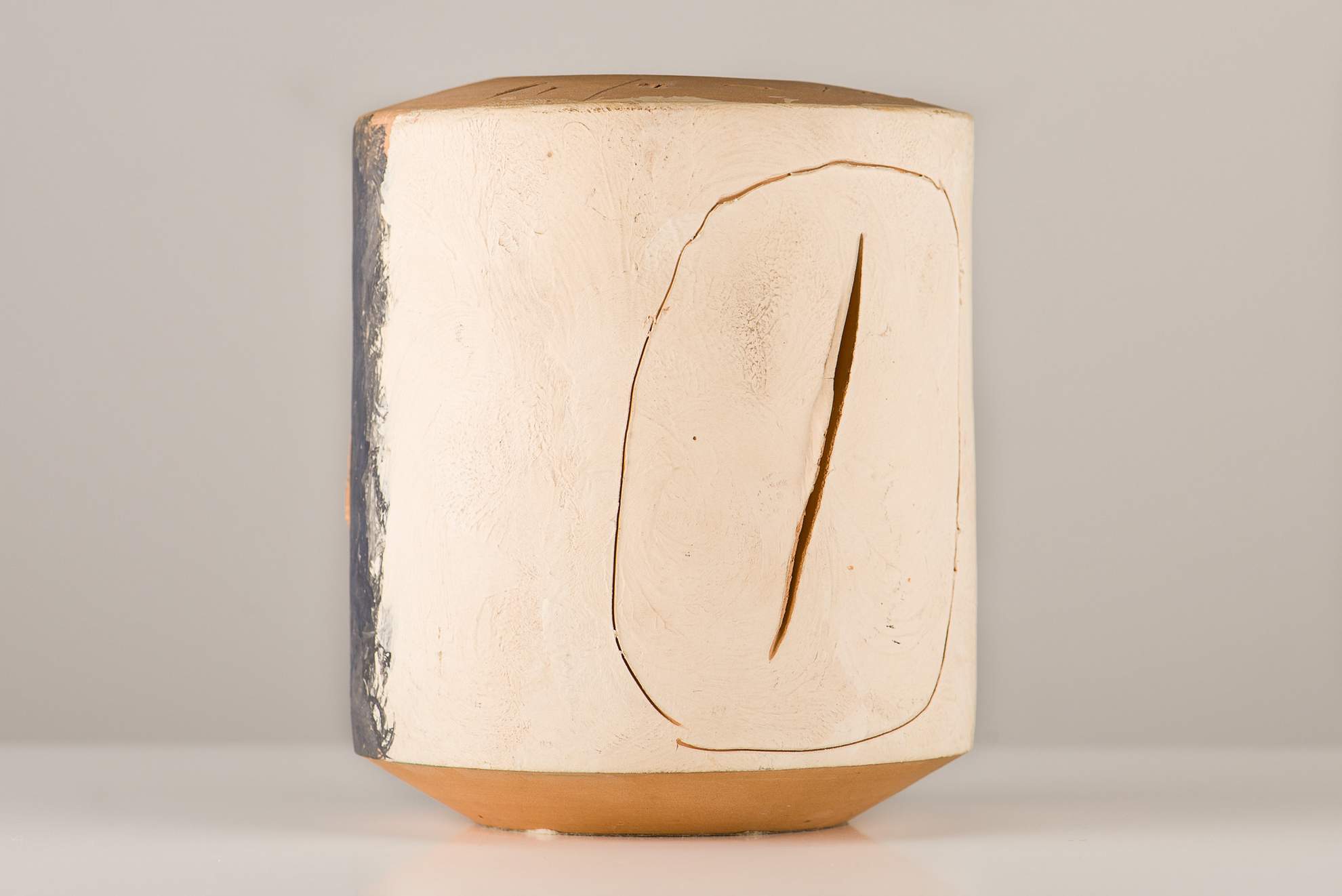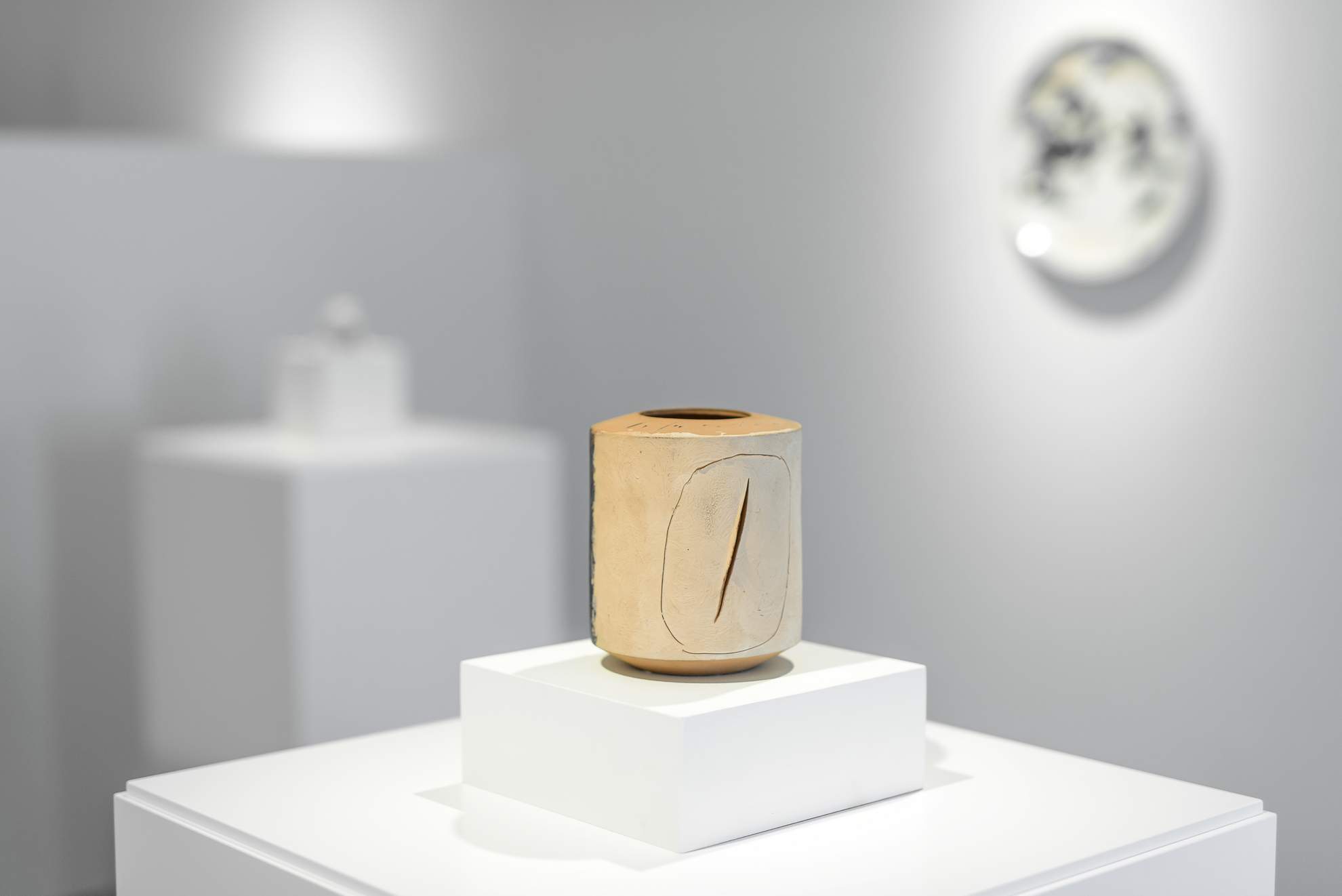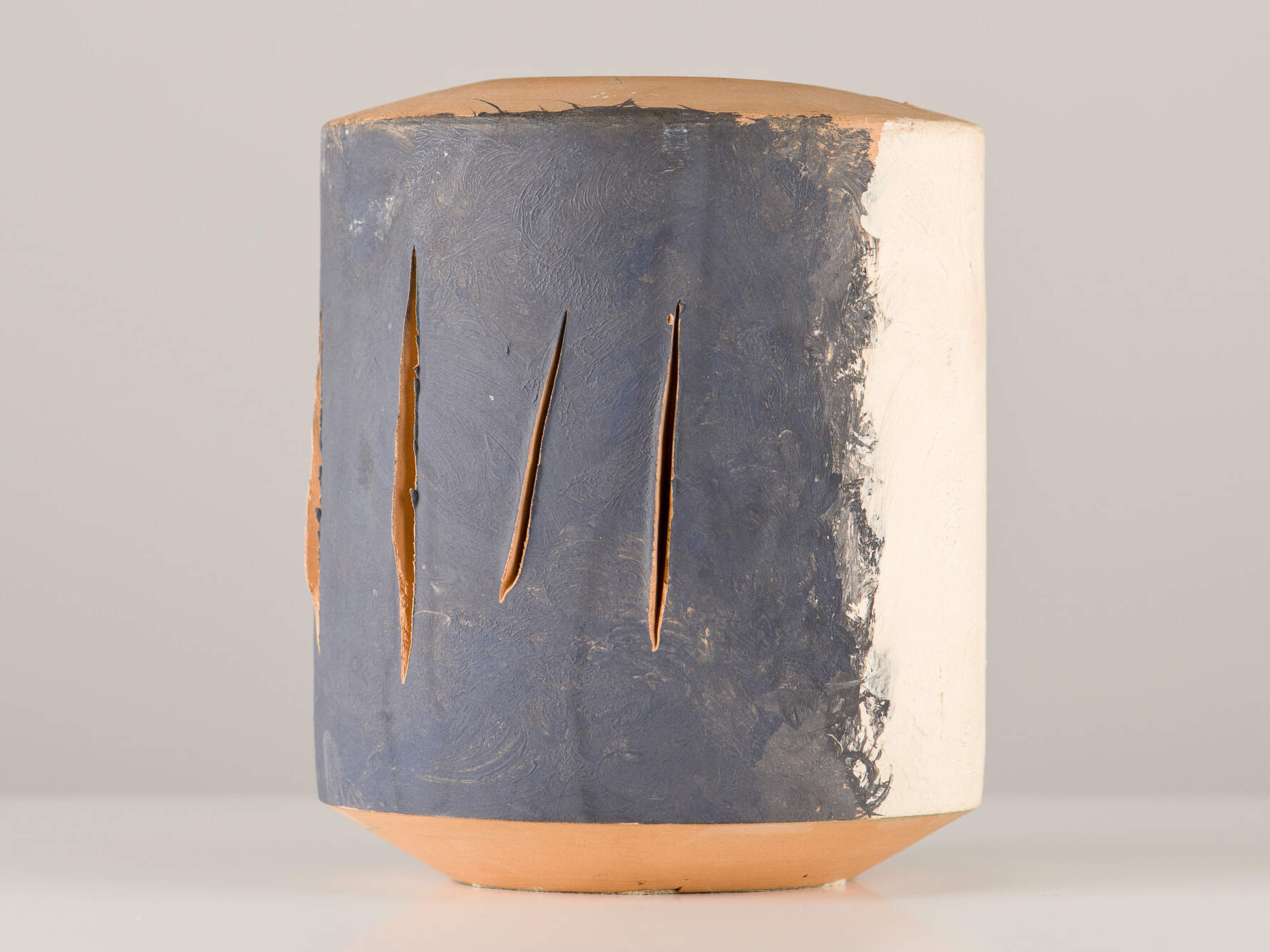
Lucio Fontana
Biography
Lucio Fonatana is born in Rosario di Santa Fé, Argentina in 1899. In 1905 his family moves to Milan. From 1914 he attends the Carlo Cattaneo Technical Institute. Between 1915 and 1918 he has to serve in the military. In 1918 he graduates in engineering. In 1922 he moves back to Argentina, where he works in his father's sculpture studio. Finally opens his own sculpture studio in 1924. From 1928 to 1930 he studies sculpture at the Accademia di Brera, Milan. From 1931 first figurative sculptures, terra-cotta reliefs and painted plaster plaques approaching abstraction arise. From the mid-1930s he works on polychrome sculptures and mosaics, attempting to expand abstract art into the spatial dimension. 1934 he joins the Paris Abstraction-Création group of artists, and sets up their Milan section. In 1935 their manifesto on abstract art is publicated. Fontana's first solo exhibition in the Galleria del Milione, Milan follows. Having moved to Buenos Aires in 1940, due to the war, Fontana co-founds the private Altamira Academy in Buenos Aires in 1946, then in 1947 he returns to Milan. Here his spatial experiments culminate in the Concetti Spaziali series, making Fontana one of the most revolutionary post-war artists. The first Spatialist Manifesto is publicated in 1948 and the group Movimento spaziale'is founded. From 1949 the first Ambiente spaziale and first buchi emerge, in the 1950s Le Pietre series are created, and in 1958 the first slashed canvases and the concetti spaziale arise. In the early 1960s Fontana combines different pictorial devices and creates first large spherical bronze objects. All his creative life, Lucio Fontana is constantly in search of new forms of abstraction. He is always interested in the relation between surface, spatial concepts and material. Virtually no other 20th-century artist brings about such fundamental change in painting and sculpture as he does. His Spatial Concepts are pierced, perforated and slashed monochrome canvases in strong colours such as red, blue, yellow or pink. The holes buchi and slashes tagli are often underlaid with black fabric in order to draw the painting more clearly into the spatial depths, thus lending additional emphasis to the cosmic and spiritual significance of his art, which he regards as a counterpart to the science and architecture of his time. He always treats the wounds inflicted on the canvas with colour, sometimes emphasising them by means of back-lighting. Fontana's slashed, perforated monochromes have long become classics of 20th-century art, and much sought-after collectors' items. Fontana dies in 1968 in Varese.
Exhibitions (Selection)
1929 Lucio Fontana, Accademia di Brera, Mailand | 1942 Museo Municipal de Bellas Artes, Rosario di Santa Fe | 1961 Fontana. Keramik, Galerie Schmela, Dusseldorf | 1969 Hommage à Fontana, Kunst- und Museumsverein, Wuppertal | 1972 Lucio Fontana, Palais des Beaux-Arts, Brussels | 1976 Lucio Fontana. Concetti Spaziali, Kunsthaus Zurich | 1977 Lucio Fontana 1899 - 1968. A Retrospective, Solomon R. Guggenheim Museum, New York | 1988 - 1989 Homage to Lucio Fontana, Collezione Peggy Guggenheim, Venice | 1996 - 1997 Lucio Fontana. Retrospektive, Schirn Kunsthalle, Frankfurt | 1999 Triennale di Milano, Milan | 2006 Lucio Fontana. Venice / New York, Peggy Guggenheim Collection, Venice & The Solomon R. Guggenheim Museum, New York | 2010 Lucio Fontana, Neue Galerie, Berlin | 2014 Lucio Fontana. Rétrospective, Musée de l’Art Moderne de la Ville de Paris | 2014 - 2015 Yves Klein / Lucio Fontana. Milano Parigi 1957 - 1962, Museo del Novecento, Milan | 2017 Lucio Fontana. En las colecciones publicas argentinas, Museo Nacional de Bellas Artes, Buenos Aires / Lucio Fontana. Ambienti / Enviroments, Pirelli Hangar Biocca, Milan | 2019 Lucio Fontana: On the Threshold, The Met Breuer & The Met 5th Avenue / Guggenheim Museum Bilbao | 2020 Lucio Fontana Ceramics, Galerie Karsten Greve, Paris / Lucio Fontanana Retrospective, MaMM, Moscow | 2021 Bochner/Boetti/Fontana, Magazzino Italian Art, New York / Group show Sign O’ the Times - Lucio Fontana, Hermann Goepfert, Jef Verheyen, Dierking, Zurich | 2022 Group show Artist - Collector – Public / The Hilger Collection, City Art Gallery of Ljubljana.
Lucio Fontana

Biography
Lucio Fonatana is born in Rosario di Santa Fé, Argentina in 1899. In 1905 his family moves to Milan. From 1914 he attends the Carlo Cattaneo Technical Institute. Between 1915 and 1918 he has to serve in the military. In 1918 he graduates in engineering. In 1922 he moves back to Argentina, where he works in his father's sculpture studio. Finally opens his own sculpture studio in 1924. From 1928 to 1930 he studies sculpture at the Accademia di Brera, Milan. From 1931 first figurative sculptures, terra-cotta reliefs and painted plaster plaques approaching abstraction arise. From the mid-1930s he works on polychrome sculptures and mosaics, attempting to expand abstract art into the spatial dimension. 1934 he joins the Paris Abstraction-Création group of artists, and sets up their Milan section. In 1935 their manifesto on abstract art is publicated. Fontana's first solo exhibition in the Galleria del Milione, Milan follows. Having moved to Buenos Aires in 1940, due to the war, Fontana co-founds the private Altamira Academy in Buenos Aires in 1946, then in 1947 he returns to Milan. Here his spatial experiments culminate in the Concetti Spaziali series, making Fontana one of the most revolutionary post-war artists. The first Spatialist Manifesto is publicated in 1948 and the group Movimento spaziale'is founded. From 1949 the first Ambiente spaziale and first buchi emerge, in the 1950s Le Pietre series are created, and in 1958 the first slashed canvases and the concetti spaziale arise. In the early 1960s Fontana combines different pictorial devices and creates first large spherical bronze objects. All his creative life, Lucio Fontana is constantly in search of new forms of abstraction. He is always interested in the relation between surface, spatial concepts and material. Virtually no other 20th-century artist brings about such fundamental change in painting and sculpture as he does. His Spatial Concepts are pierced, perforated and slashed monochrome canvases in strong colours such as red, blue, yellow or pink. The holes buchi and slashes tagli are often underlaid with black fabric in order to draw the painting more clearly into the spatial depths, thus lending additional emphasis to the cosmic and spiritual significance of his art, which he regards as a counterpart to the science and architecture of his time. He always treats the wounds inflicted on the canvas with colour, sometimes emphasising them by means of back-lighting. Fontana's slashed, perforated monochromes have long become classics of 20th-century art, and much sought-after collectors' items. Fontana dies in 1968 in Varese.
Exhibitions (Selection)
1929 Lucio Fontana, Accademia di Brera, Mailand | 1942 Museo Municipal de Bellas Artes, Rosario di Santa Fe | 1961 Fontana. Keramik, Galerie Schmela, Dusseldorf | 1969 Hommage à Fontana, Kunst- und Museumsverein, Wuppertal | 1972 Lucio Fontana, Palais des Beaux-Arts, Brussels | 1976 Lucio Fontana. Concetti Spaziali, Kunsthaus Zurich | 1977 Lucio Fontana 1899 - 1968. A Retrospective, Solomon R. Guggenheim Museum, New York | 1988 - 1989 Homage to Lucio Fontana, Collezione Peggy Guggenheim, Venice | 1996 - 1997 Lucio Fontana. Retrospektive, Schirn Kunsthalle, Frankfurt | 1999 Triennale di Milano, Milan | 2006 Lucio Fontana. Venice / New York, Peggy Guggenheim Collection, Venice & The Solomon R. Guggenheim Museum, New York | 2010 Lucio Fontana, Neue Galerie, Berlin | 2014 Lucio Fontana. Rétrospective, Musée de l’Art Moderne de la Ville de Paris | 2014 - 2015 Yves Klein / Lucio Fontana. Milano Parigi 1957 - 1962, Museo del Novecento, Milan | 2017 Lucio Fontana. En las colecciones publicas argentinas, Museo Nacional de Bellas Artes, Buenos Aires / Lucio Fontana. Ambienti / Enviroments, Pirelli Hangar Biocca, Milan | 2019 Lucio Fontana: On the Threshold, The Met Breuer & The Met 5th Avenue / Guggenheim Museum Bilbao | 2020 Lucio Fontana Ceramics, Galerie Karsten Greve, Paris / Lucio Fontanana Retrospective, MaMM, Moscow | 2021 Bochner/Boetti/Fontana, Magazzino Italian Art, New York / Group show Sign O’ the Times - Lucio Fontana, Hermann Goepfert, Jef Verheyen, Dierking, Zurich | 2022 Group show Artist - Collector – Public / The Hilger Collection, City Art Gallery of Ljubljana.
IMPRINT
© DIERKING 2025
